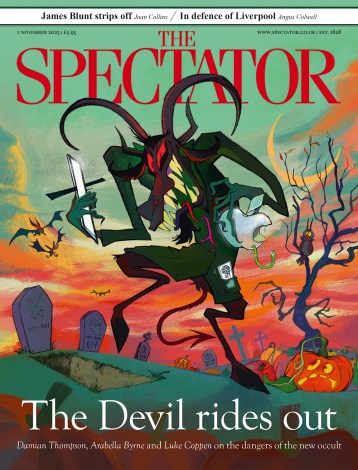For the past 20 years or more the auction houses have been doing their utmost to wrest the retail art market out of the hands of the dealers. Few would disagree that they have had considerable success. In taking over Sotheby’s in 1983, the Detroit shopping mall billionaire Alfred Taubman saw what he called ‘a unique marketing opportunity’ in transforming what was essentially an up-market but loss-making wholesale operation — the majority of saleroom buyers were dealers — into a glamorous retail business. The allure of turning a profit by circumventing the dealers was irresistible. And the real beauty of it was that this ‘retail’ business did not require any investment in expensive inventory.
All that was needed was to persuade the newly affluent that they needed to acquire works of art and that the saleroom was the place to buy them. No less importantly, to lure the potential consignor their vast publicity machines told the world that the heat and drama of a saleroom bidding battle would generate a far higher price than any level-headed dealer would be prepared to offer any client. And, hey, why stop at just selling art, jewellery and antiques? What about dealing — euphemistically termed private-treaty sales — and providing everything from bespoke financial services and legal advice to restoration and art education, as well as a smart cocktail-party circuit to pep up social life?
So the auction houses got makeovers and new corporate HQs, and the scruffy experts were gradually replaced by staff who, however clever, pass for suave young sales assistants. As if to emphasise the point that art and antiques was just another facet of the luxury goods industry, the world’s third largest auction house was taken over by LVMH. The Big Two now dominate the art market. It is almost impossible to go to a major sale these days without hearing some dealer lament that, if he asked for even half of that auction price, his clients would shake their heads and ask for a deal. Those dealers who are still in business, that is. And as for expecting any of those clients to offer them something exceptional privately…
In the light of all this, what are we to make of Sotheby’s extraordinary announcement that in New York in January it will stage an unprecedented sale of Old Master paintings consigned entirely by dealers? Are we to read it as the dealers’ last-gasp admission that they are beaten and that they cannot sell their pictures but the auction houses can? The answer is that in embarking on such a venture both sides are taking a risk. Perhaps, and most importantly, it is a signal of some kind of forward-looking rapprochement in which Sotheby’s at least is acknowledging the symbiotic relationship between saleroom and dealer in the marketplace. The market needs the dealers’ expertise as well as their terrier-like skills in sniffing out the long-lost or obscured. As George Wachter, co-chairman of Sotheby’s Old Master paintings department worldwide, put it, ‘Dealers are absolutely essential to the Old Masters’ market. We are not adversaries but one big art-history selling-related family.’
There is nothing novel, of course, about dealers consigning works of art to auction — every lot that does not bear some quaint legend along the lines of ‘the property of a lady of title’ has come from the trade. Indeed, some would say that the salerooms are where they off-loaded their mistakes. The auction houses have also long been dealers. Christie’s has even recently appointed a full-time member of staff to develop its international Old Master private-treaty business and Sotheby’s, on occasion, will buy a share of a picture with a dealer (the information is all there in the catalogues if you know how to look for it).
What is new is the idea of working so closely together to broaden this quite difficult and recherché market, not least to ensure its future by finding the next generation of collectors. No dealer’s Rolodex can match the databases of the auction houses. This sale will target those existing American Old Masters collectors who never travel to the London sales or to the art fairs of Europe, and also a cross-section of those who buy the likes of wine, jewellery and furniture. Wachter envisages a group of around 1,000, and will offer them 80–90 lots with a value of anything from $20,000 to $1 million. Sotheby’s will pick property that is good quality, in good condition, attractive and, most importantly, reasonably priced. To counter the claim that no one would want tired old dealers’ stock, Wachter contends, ‘Every picture has a price at which it will sell, regardless of its subject or freshness.’
To reassure inexperienced clients, some of the leading experts in the field have agreed to serve on a vetting committee. Sotheby’s will take the pictures on an international tour, taking in Amsterdam, Paris, London, Boston and Los Angeles. In return, the auction house will charge a flat commission of 6 per cent — the standard reduced dealer commission. No sale, no fee. Sotheby’s will be publishing the contact details of the participating dealers; the dealers will have access to the auction house’s clients.
This bold, possibly reckless experiment comes at a time when the stock of high-quality works of art is dwindling. Over the past two decades, the auction houses have discovered that servicing the demanding rich, once the preserve of the dealer, is a very time-consuming and expensive business. Even the new all-singing, all-dancing auction house remains a high-overhead, low-profit operation. In order to run at any profit at all, the salerooms have been obliged to hike up their premiums, and in so doing they have made themselves a far less attractive marketplace for owners of less valuable items. Moreover, what does not tend to get reported in the press — mea culpa — is just how badly some pieces do fare at the block. There is no guarantee of any profit in this business. The auction houses are not having an easy ride. Perhaps some among them are starting to realise that, while it may make good business sense to squeeze out the dealer in a bullish market, there will be nobody left to pick up the pieces when the private buyers back out in a recession.





Comments